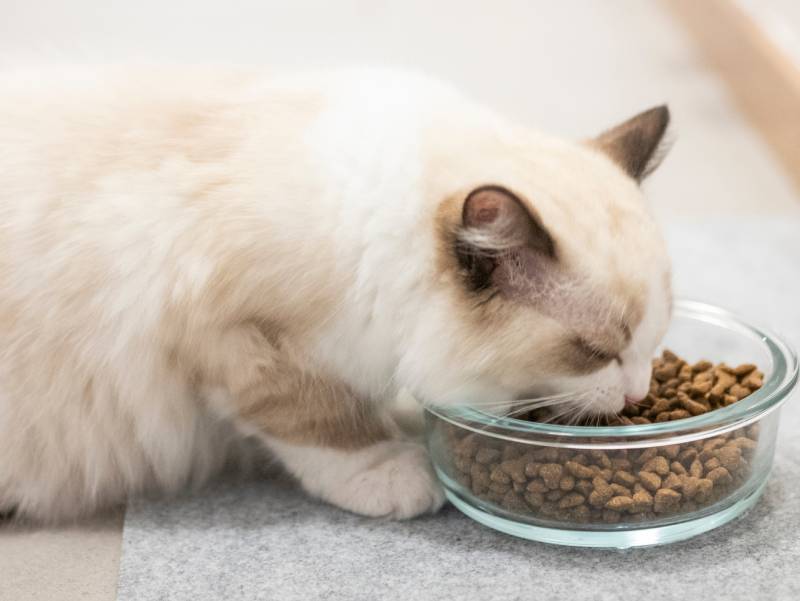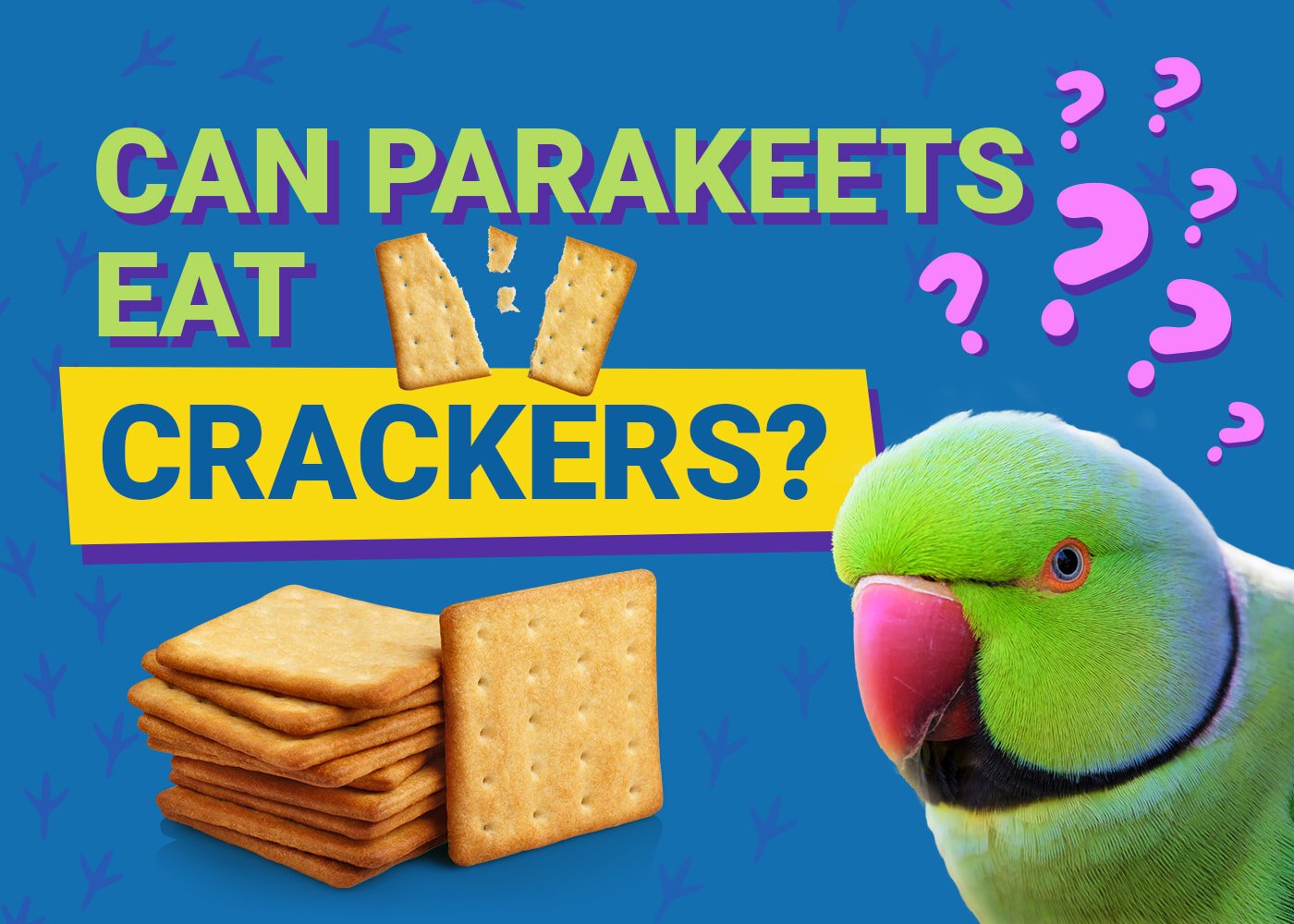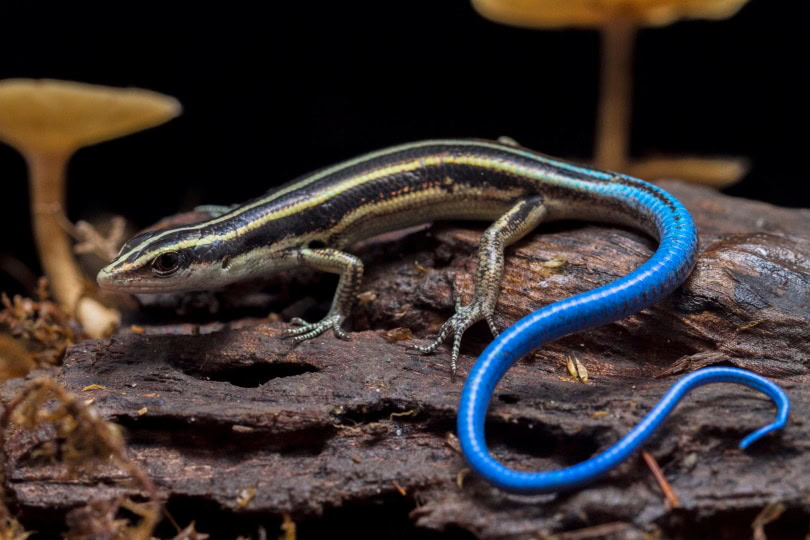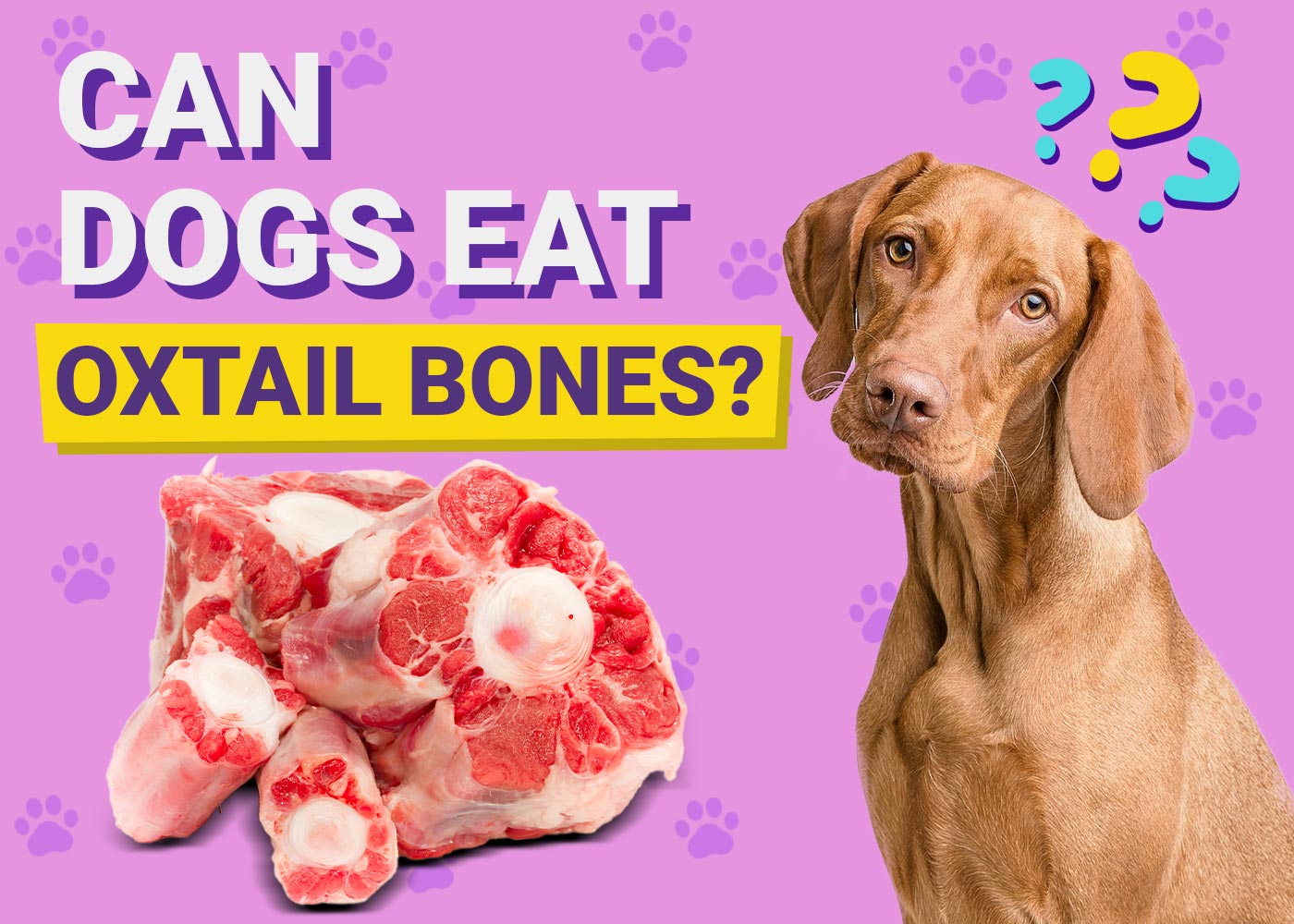VET APPROVED

The information is current and up-to-date in accordance with the latest veterinarian research.
Learn more »Click to Skip Ahead
The term human-grade cat food is getting thrown around a lot these days. The more pet foods that come on the market, the more these ingredients are used. But what exactly does it mean to be human grade?
In a nutshell, human-grade cat food is prepared with ingredients suitable for human consumption, although we don’t recommend sampling your cat’s food. So we’ll explain in more detail how these ingredients are sourced and how these facts are determined.

What Exactly Does “Human-Grade” Mean?
By definition, human-grade cat food constitutes pet food made in facilities that match the same standards for human consumption. All ingredients therein must meet these requirements.
The American Association of Feed Control Officials (AAFCO), does not certify human-grade pet food, however, it recognizes that it has two characteristics. All the ingredients are edible by humans, and all food is manufactured, packaged, and held to the FDA and USDA guidelines for safe food production.
Therefore, if food is made with human edible ingredients – this means there are no meat meals or feed-grade food in the ingredient list, as those ingredients are not approved for human consumption.
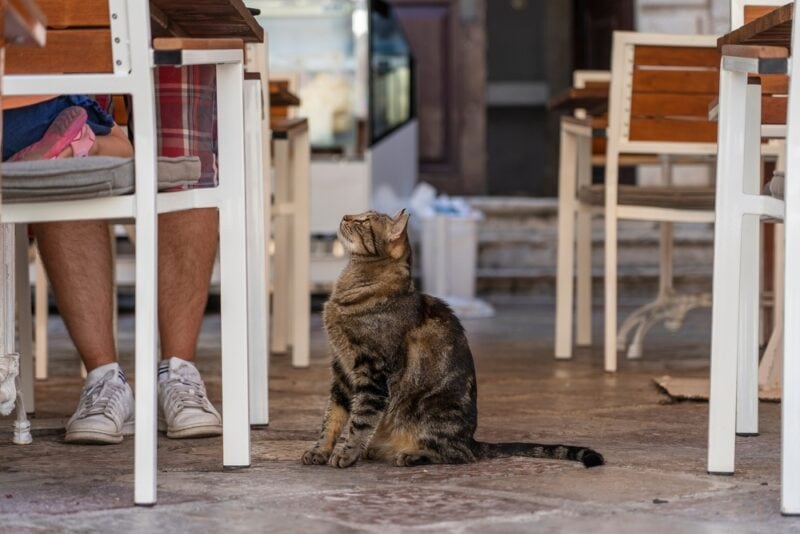
Why Choose Human-Grade Cat Food?
Why would you want to put a different quality in your cat’s food bowl than you do in your own dinner plate? After all, our kitties deserve to have a thriving life—starting with a system-supportive diet.
Over time, we understand what preservatives and artificial ingredients do to our pets. But few know what many of the ingredients in commercial cat food mean. Human-grade ingredients aim to meet the exact requirements we consider for our health.
The better quality and less processed food you feed your cat, the less likely they are to get diseases and other ailments that could impact their quality of life. Since pet nutrition is rapidly changing, you can expect to see more human-grade ingredients in the future.
However, the kinks haven’t fully worked themselves out yet. Even recipes that claim human-grade ingredients must meet rigorous standards for the full recipe to qualify for human-grade in entirety. To maintain the “human-grade” label, the packaging and storage of the food must also meet human food safety standards, ensuring no cross-contamination or mishandling that could compromise food safety.
It’s much more common to see human-grade cat foods these days than it was in the past and we are delighted to know that companies, like Smalls, have pioneered bringing 100% human-grade fresh recipes to your beloved cat’s plates.
+ Get Free Shipping & Treats!
Is Every Recipe 100% Human-Grade?
No, every recipe that claims human-grade ingredients is not fully “human-grade.” Most companies that use this verbiage mean only certain elements that make up the recipe are fit for human consumption. So, make sure to check for tricky marketing lingo.
All your cat’s food ingredients should be very transparent. So, you should have no problem tracing where they obtain said ingredients on the bag or the website. If you have any questions regarding the ingredients of your particular cat food, contact the company directly for answers.
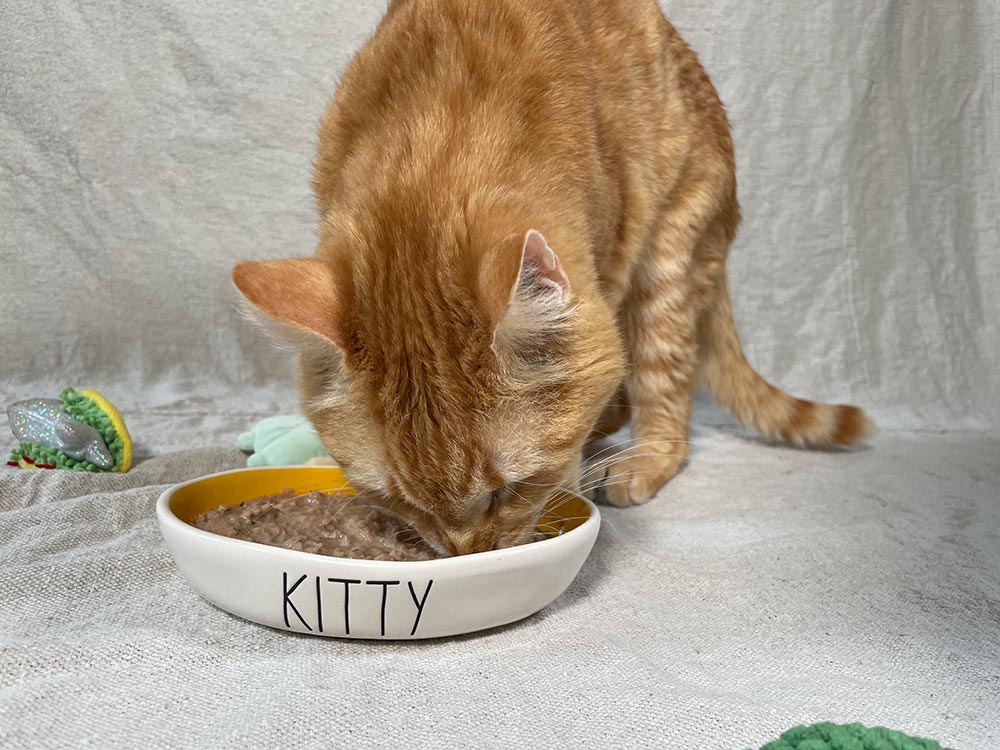
What Types of Cat Food Offers Human-Grade Ingredients?
It is possible to find human-grade cat food ingredients in dry kibble, wet canned food, fresh and raw diet selections. However, only some of them will contain 100% human-grade ingredients, so check the label.
Do not hesitate to consult your veterinarian if you have any concerns regarding your cat’s weight or diet.

What Other Perks Should You Look for in Human-Grade Cat Food?
The type of cat food you choose should have a well-balanced variety of nutritious animal proteins, make sure there is a “complete and balanced statement” in the label.
High Protein
A healthy animal protein is crucial for cats, as they are obligate carnivores. The protein source is the most critical ingredient and should make up most of the recipe. Look for clearly named and recognizable meat ingredients in the package. Remember that although you may not crave “chicken hearts” or “pork liver”, it is still considered human grade because of the quality, it is good quality, it comes from a healthy animal and it has not been rendered into a meat meal. In fact, these organs are great for cats to consume as they are a source of essential amino acids like taurine and arginine which your cat cannot synthesize and needs to consume.
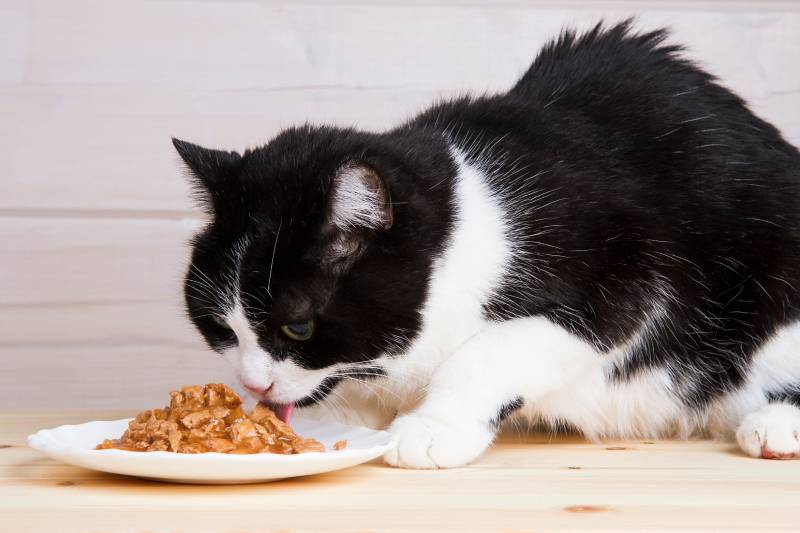
Healthy Fatty Sources
In addition to protein, your cat needs fatty acids to maintain their cells, immune system, and overall health. Look for ingredients like fish oil, anchovies, or salmon oil to ensure your cat’s food has a source of Omega-3 fatty acids.
Low Carbohydrate
Cats don’t need carbs, so make sure the recipe does not contain large amounts of grains, potatoes, and legumes. Some recipes may include veggies as a source of fiber, which has some benefits to your cat’s digestion and gut bacteria, but it should be kept at a minimum.
Vitamins and Minerals
Your cat needs an assortment of vitamins and minerals that are perfectly balanced. Most cat food will be supplemented to ensure they provide every micronutrient your cat needs to thrive.
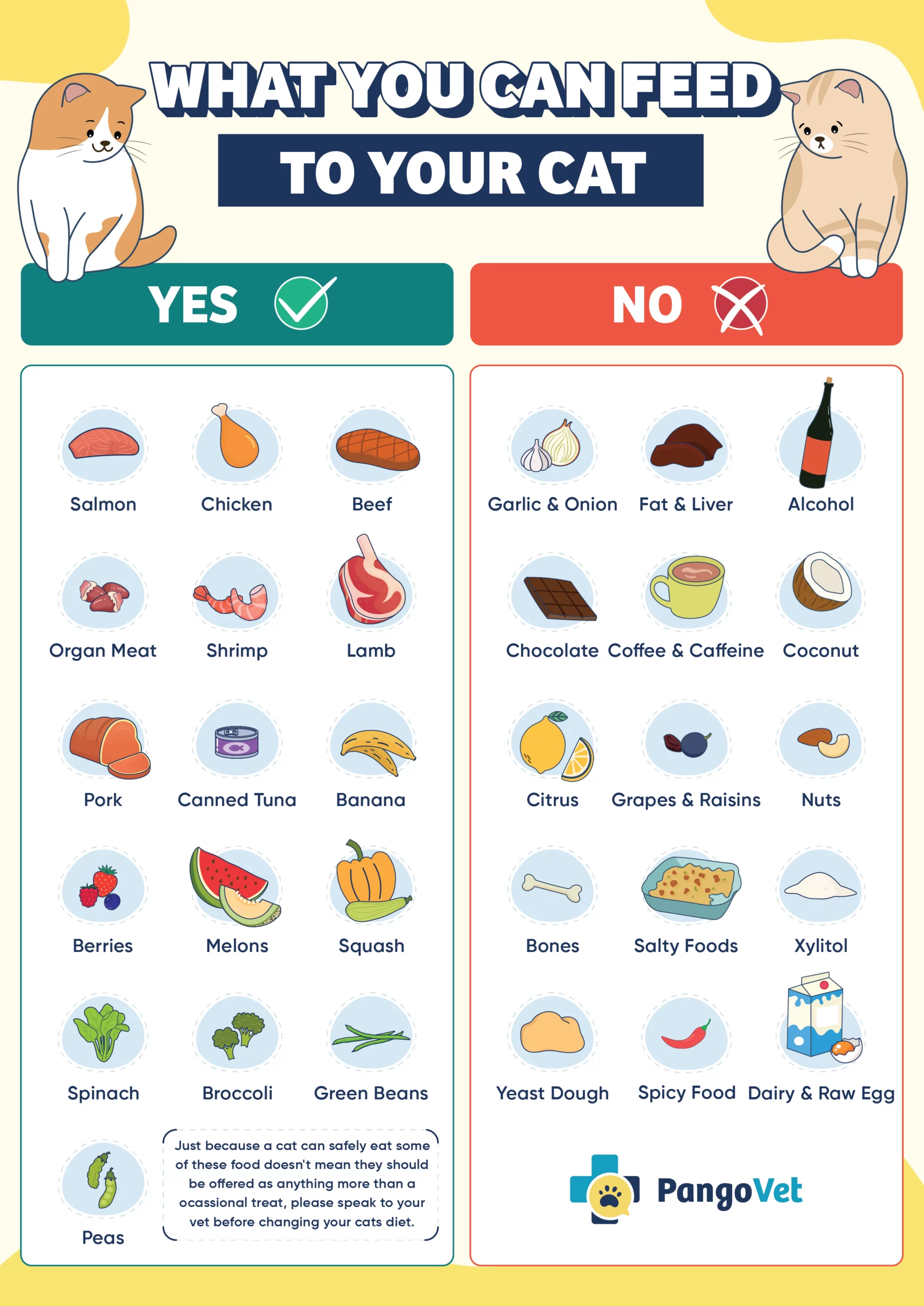
Is Feed-Grade Cat Food Different?
The difference is simple—human-grade cat food passes FDA inspections, and feed-grade does not. These ingredients often include by-products or materials considered not suitable for human diets, from lower-grade meat, animal by-products (like organs, bone meal, or rendered fats), and grain fractions. While they provide essential nutrients for cats, they are held to lower quality control standards compared to human-grade ingredients

How to Choose Cat Food Correctly
With the ever-expanding options on the market, it might be tricky to know if you are choosing the correct brand and recipe for your cat. Sometimes, these things can be trial and error—finding a nutritious diet option that works best for your kitties.
As nutritionists work to develop more species-appropriate options for domesticated animals, we can expect to see several changes before we get it right. So feel free to research and explore exactly what labels mean on food and how you can narrow down the search.
Always consult with your veterinarian about your cat’s nutrition goals. They will point you in the right direction to achieve the dietary results you’re looking for.
High-quality cat food is an important part of fostering a long and healthy life for your cat but the right cat food and water dish will promote good posture, offer whisker relief, and aid in good digestion. The Hepper NomNom Cat Bowl is our favorite bowl since it offers all of the above and is beautifully crafted to meet modern home stylings. The wide tray design catches any food and water spills and the entire setup is dishwasher safe. Learn more about the Hepper NomNom Cat Bowl here. At PangoVet, we’ve admired Hepper for many years and decided to take a controlling ownership interest so that we could benefit from the outstanding designs of this cool cat company!
 Conclusion
Conclusion
So now you understand exactly what human grade means. These ingredients are fit for human consumption, and depending on the label having human-grade ingredients doesn’t necessarily mean it extends throughout the entire recipe. Make sure you understand by tracing the ingredients listed as well as the complete and balanced statement so you are sure you provide your kitty with everything they need to thrive.
We anticipate more human-grade ingredients being used in cat foods around the board. So, look for more upcoming options for better feline feasts.
Featured Image Credit: Snowice_81, Shutterstock
